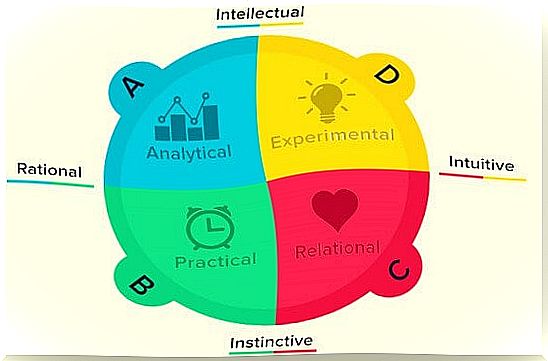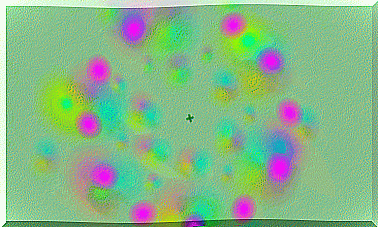Brain Dominance According To Herrmann’s Theory: What Is Yours?

The Herrmann Brain Dominance Test is a 120-question instrument that is used to understand how we process information and our particular learning style. This curious model therefore explains to us that the brain has four dials. And that generally we all present a certain predisposition towards some of these different typologies.
It is very likely that more than one of our readers has already performed this test. Nevertheless, it should be said that it is not especially common for a very concrete reason. Indeed, the “ Herrmann Brain Dominance Instrument ” (HBDI) does not have neurological validity, many scientists say it forms part of what is often called “Popular Psychology”.
The topic of cerebral dominance and lateralization is very controversial. Let’s take an example. In this instrument it is explained that creativity is located exclusively in the right hemisphere. It should be mentioned that this data is not completely correct. Because creative processes actually use the whole brain. The totality of the areas with a neuro-activity as sophisticated as it is marvelous.
Does this mean that Herrman’s brain dominance test is useless? Absolutely no. There is one aspect that makes it useful and for that, it is advisable to bring it a certain coalition in our space. This test starts from a very important principle: each person has a particular technique allowing him to process information, transform it, understand data, interpret.
We can just see it in the students when we have to study or even in ourselves when we are working. Some are meticulous, conservative. Others are innovative. Some are more visual while others process information more in an auditory or communicative way… All of this is in agreement with the hypothesis that is reflected in the Herrmann test and here is the classification it can offer us.

Brain dominance in the Herrmann test
Before talking about this instrument developed in the 90s, it is worth talking about its creator, Professor Ned Herrrmann. He was president of the American Creativity Association and one of the pioneers in creative thinking and reasoning. Specializing in physics and music, he worked very early in General Electric with one goal: to improve the production, motivation and creativity of employees.
For this, Mr. Herrmann analyzed the different styles of reasoning and learning of all workers by then creating a brain map. From there, he developed the theory of brain dials in order to state 4 typologies, four different forms according to which individuals usually learn, think, create, interact and understand their reality.
This cerebral dominance is described as follows:
Type A: Analytical people
Ned Herrmann calls them the experts. It is a type of profile characterized by a style of logical, analytical and rather technical reasoning.
- They are very rational people who deduce data from hard facts.
- Thus, analytical people are often more competitive and individualistic, in addition to being intelligent, ironic and with a great sense of humor.
- The works most associated with this type of brain dominance are those related to mathematics. To physics. Engineering. Chemistry. Etc.
Type B: organizational style
As the name suggests, we face a type of organized profile, who likes order and meticulousness.
- These people do not take any action without having planned it beforehand. They like everything that is predictable and conservative, they like everything to be under their control.
- In general, in this “organizational” dial can be found business leaders, managers, accountants …
Type C: the relational
Type C refers to this cerebral dominance which affects emotionality, the need to be connected with others, to be in relationship to take advantage of this social contact in which to feel useful, in which to give and receive.
These are people who know how to communicate. Who are spontaneous. Extroverts. And who generally prefer jobs such as journalism, nursing, social work, law, etc.
Type D: the experimental
The fourth profile of this brain dominance test refers to the personality which is characterized by a holistic mindset. They are visual, spontaneous and very creative profiles.
They are people who like to experiment and innovate, although there is some risk associated with it. They always look to the next day but try to learn from the present. To be able to go further every day.
Thus, the professions which usually correspond to them are architects, writers, musicians, painters, graphic designers, etc.

To conclude, after having seen these four typologies of the Herrmann brain dominance test, it is possible that more than one does not identify only in an area. It’s usual. In fact, estimates on the Herrmann Brain Dominance Instrument ( HBDI) tell us that almost 60% of the population has traits in more than one of these four areas.
Also, it is important to point out that none of the dominances is better than another. And that they do not determine and predict anything. They only tell us the orientation we usually have when interacting with our environment. Or our style of information processing. When it happens to us. It’s, why not, a simple way to get to know us a little better.










